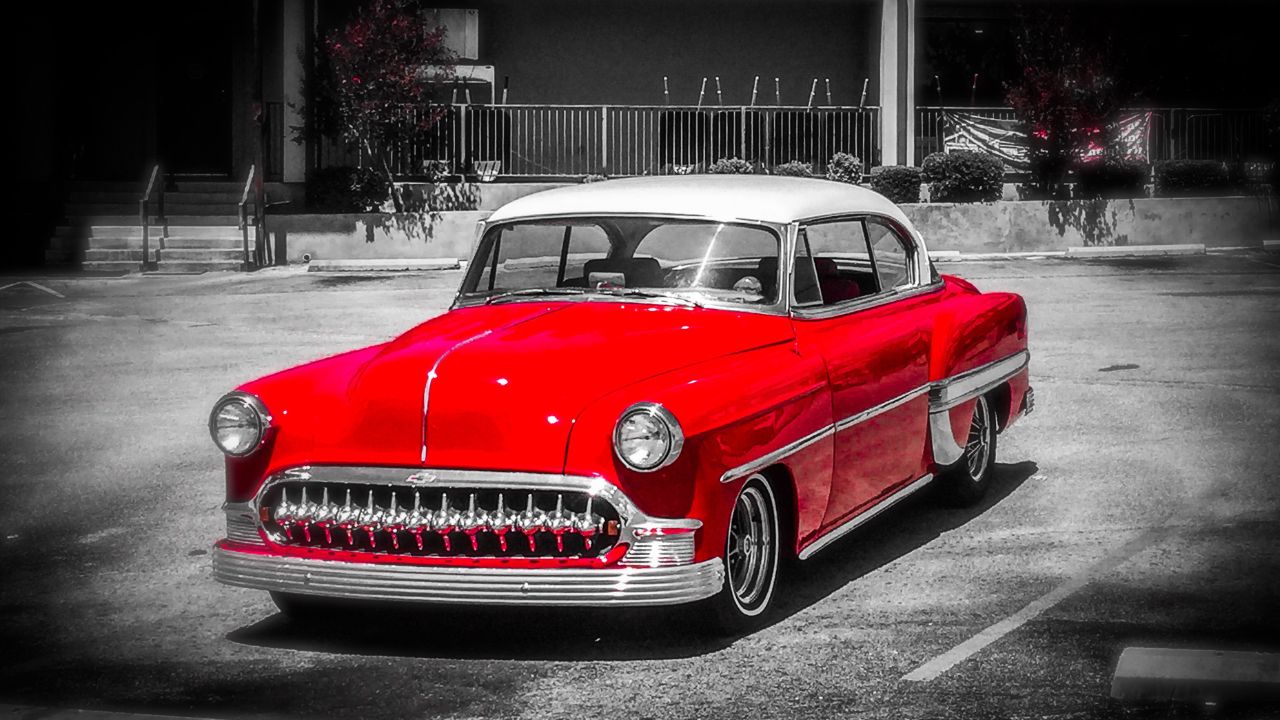
Boss 429 was the extreme Mustang muscle car. It featured a massive scoop on its hood and vents in its rear fenders. A Boss 429. With good care, it can fetch upwards of $500,000.
No matter whether you are a hero of a villain, it doesn't matter.
Ford's Mustang fastback is a hero's vehicle, with its elegant lines and powerful performance. This iconic American muscle car is a hit and it is well-loved. A classic example of this muscle car is the famous "Espionage" Mustang, created in Wisconsin by Mod Shop. You can now own a Mustang fastback to replicate its legendary performance.
But there's a catch. It's possible that you have plans to purchase a muscle car but aren’t sure which one you should choose. While you might end up becoming a hero in a movie it is possible to lose a vehicle. The next owner of the Mustang muscle car should preserve the car's history and make sure it lives a heroic life.

Which muscle car is best for you?
Which Mustang muscle car would suit you best? The Mustang's sleek design and power are just a few of the many reasons you should drive it. Which one is best? Read on to find out. There is a new generation in muscle cars, and you can choose one of the most current models. Our review of the Ford Mustang will provide more information. We also discuss its performance during drag races.
Ford's muscle car brand is well-loved and most popular in the world. But what's the secret behind its name? Mustang invokes images of power, freedom and coolness. It is also an Americana encyclopedia part. The Mustang is associated the Land of the Free. Its driver shaves with an ordinary razor and wears a good hat.
Which one is the best buy?
The 2021 MY Mustang is the current muscle car model. This car received excellent ratings from U.S. News & Consumer Reports. It is reliable and safe. You will also find a comfortable interior as well as a wide range of trim levels and engine options. As such, it is expected to have low mileage.
All muscle cars don't look the same. Some of these cars are very low-performance while others are true classics. While some cars will be iconic, others may make American muscle car enthusiasts embarrassed. In the 1960s, automakers competed to produce the fastest muscle cars. Many of the finest cars were built between 1965-1969 when American carmakers took pride building their cars.

Which one of these is a reliable second-hand car
Which Mustang muscle vehicle is the most reliable used vehicle on the market? Many buyers will ask this question. This depends on what you like and which car you are looking for. Consumer Reports rated the 2010 Ford Mustang as the least reliable sports car. The Mustang is a reliable and trustworthy used car. Consumer Reports gave Mustang an overall reliability score 1/5.
The Ford Mustang sixth generation features the most up-to-date technology. The EcoBoost inline four comes standard with a 10-speed auto transmission. The GT trim is more expensive and offers a 420-horsepower V8. The Ford Mustang ranges in price from $27,000 to $35,000 for a base model, and around $29,000 for a GT. It will cost you more to buy a Shelby GT500 or Boss 302 Mustang. The 2011-2019 Ford Mustang is the most reliable used car.
FAQ
Is a career in automotive mechanic promising?
If you are determined to excel, the automotive industry offers many opportunities. Working hard and learning from others is the best way to be successful in this field.
Communication skills are important as customers and coworkers will often be your main focus. It's important to be flexible and willing to travel. This will make commutes difficult.
Take classes at community colleges or universities if you're interested to work in automotive. Many schools offer programs designed specifically for students interested auto repair, sales, and customer services.
Mechanical engineering should be your first choice for a degree. You can earn a bachelor's in as little four years.
Many companies will also hire graduates right out of school. Therefore, it is a good idea to look for employment while still pursuing part-time studies.
Once you've completed your education, you'll probably need to complete some form of training before being able to take up a position as an automotive technician.
This means that you will need to pass tests such as the Automotive Excellence (ASE) certification exam. This test covers engine maintenance and brakes as well as suspension.
Once you have passed the ASE Test, you are eligible to apply for a National Institute for Automotive Service Excellence License.
Private individuals can have their vehicles repaired with a license. You'll be paid based upon the number of services provided.
It's important to note that not all states require licensing. You will need a license if you want to work in a different state.
Some states won't issue licenses until you have completed a certain amount training. If you are one of these people, you might need to look for another alternative.
How long is an automotive mechanic apprenticeship
An automotive mechanic apprenticeship takes around three years to complete. This includes two years at school and two years working as an apprentice. The first year is used to learn all aspects of the trade including safety procedures and theory. You'll also learn how tools can be used safely and efficiently during this year. You'll spend the second year in on-the-job training, where you will gain experience in various trades. You will have the opportunity for formal training during these years.
The final year is dedicated to earning certifications and qualifications in the field. These include NVQs (National Vocational Qualifications), that are given after passing specific industry exams. There are also HNCs (Higher National Certificates), which cover general subjects like management, business administration, customer service, and more. City & Guilds certificates offer qualifications in certain trades.
What are the requirements for an automotive technician?
You need to have high school diploma or GED and good grades in English as well as maths. You must also be able to read, and write. To be allowed to work, you must pass a written and practical test.
Is it hard to be an apprentice mechanic?
It's not simple, but you can learn quickly and there are many avenues for advancement.
You will need to be patient and persevering. Also, you must know how to fix trucks, cars, and motorcycles.
Customers and family members can put a lot pressure on you. They want you to succeed. But, you shouldn’t be pressured to make any decisions you aren’t happy with.
It could be a great job choice if you love fixing cars. This is a job that allows you to earn a decent income and grow your business.
But, you might prefer a different path. In this case, you could consider becoming a technician instead.
This means that you can use your technical knowledge to help other workers. Technicians could benefit from your technical expertise to solve problems or teach new techniques.
You can also become a service advisor. As a service advisor, you will provide assistance and advice to customers as they bring their car to a garage.
Your decision will be based on what your priorities are. There are many options to choose from, and it is up to you which one suits you the best.
Statistics
- The U.S. Bureau of Labor Statistics (BLS) reports that the job outlook for automotive service technicians and mechanics is expected to decline by 4% from 2019 to 2029. (indeed.com)
- According to the BLS, the median annual salary for automotive service technicians and mechanics in the United States was $44,050 in May 2020. (uti.edu)
- According to the BLS, total auto technician employment is expected to exceed 705,000 by 2030. (uti.edu)
External Links
How To
How to properly diagnose and repair your vehicle
First, look at the symptoms of your car to determine if it needs repair. These steps will help you diagnose your car properly.
-
Check engine lights. You should inspect the dashboard lights, such as the engine light indicator and the oil pressure gauge. Also, check the battery light indicator. If they have been flashing for more days than usual, it could be a sign that something is wrong with the vehicle.
-
Inspect the tire treads. Tires that are worn can cause issues with handling and braking. The treads of the wheels should be inspected as well. They should be clean, and they should be smooth. To do this, remove the wheels and take them out. A flashlight can be used to check how worn the treads are.
-
Monitor the level and consistency of your brake fluid. You must keep track on the level of brake fluid in your vehicle. This helps ensure that your brakes operate properly. If your brake fluid level is low they might not work properly when you apply pressure.
-
You should test the suspension system. Vehicles usually have a suspension system that helps absorb shocks and vibrations while driving. It improves control and allows for smoother accelerations or decelerations. You might notice a wobbly feeling or uncontrollable shaking in your vehicle if it has a problem with its suspension. If you are unsure if your vehicle is suffering from a suspension problem, put weight on the front and rear axles to check the movement.
-
Examine your steering column. The steering column is used to link the steering wheel with the rest of vehicle's components. Steering columns can be damaged by accidents. You should replace the steering column if it is loose or weak.
-
Pay close attention to the exhaust tube. Exhaust pipes move gases from combustion chamber to atmosphere. If your exhaust pipe leaks or cracks, it will allow harmful fumes into your cabin. You should also fix any bent tailpipes immediately.
-
Take a look under your hood. Look underneath your hood to see if anything looks strange. There could be fluid leaking from your engine. You should also contact a professional technician if there is an unusual odor coming from the engine compartment.
-
The air filter should be checked. The air filter in your vehicle collects dirt and dust from the environment. A dirty filter can lead to a poor vehicle's performance. Replace your air filter regularly.
-
Make sure you check the fan belt. Your vehicle's fanbel connects the engine and transmission. If it breaks, the engine won't turn over. The process of replacing the belt is straightforward. All you need are a screwdriver & pliers.
-
Check the radiator hose and hoses. The radiator hose is used to carry water from the radiator to your engine. It can crack or become damaged and leak hot liquid onto an engine. The hose can be repaired with a pair or needle-nosepliers, and a wire brush.
-
Make sure you have the windshield wipers checked. Windshield wipers use electricity to clean away snow and rain. If they stop working, streaks could be left on your glass. The solution is to change the washer fluid.
-
You should inspect the cables. Your car's electrical system is powered by batteries. If you are replacing batteries, disconnect the negative cord first. Failure to do so can damage your alternator.
-
You should check the headlights. Headlights are used to illuminate the road ahead. If they don't work properly, it can cause poor visibility. Inspect the bulbs for signs of burnt out.
-
Make sure you have your lights on. Lights warn other drivers when you approach them at night. It could cause distraction and even lead to an accident if it doesn't work.
-
You should inspect your brakes. Before you collide with another vehicle, brakes will slow down the car. If they aren't working correctly, you could lose control of your car and crash.
-
Change the oil. Keep your engine lubricated with oil. It protects metal parts and prevents them from wearing too quickly. It is recommended to change the oil each month.